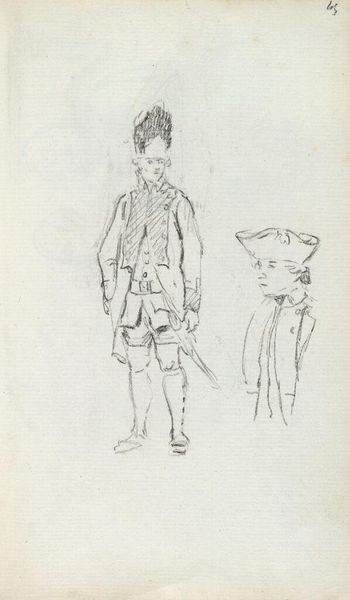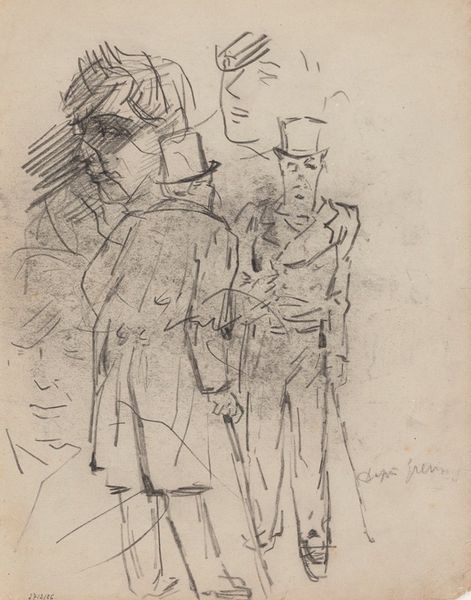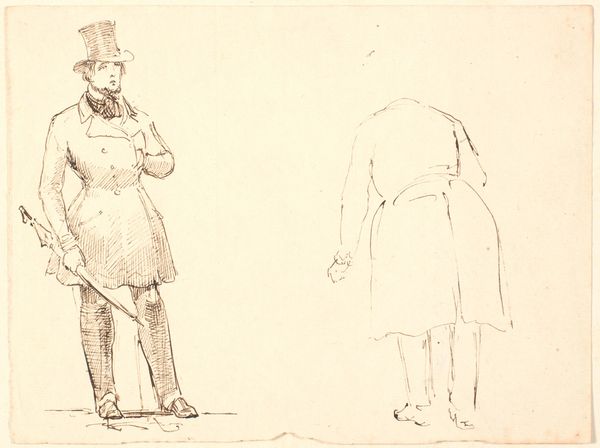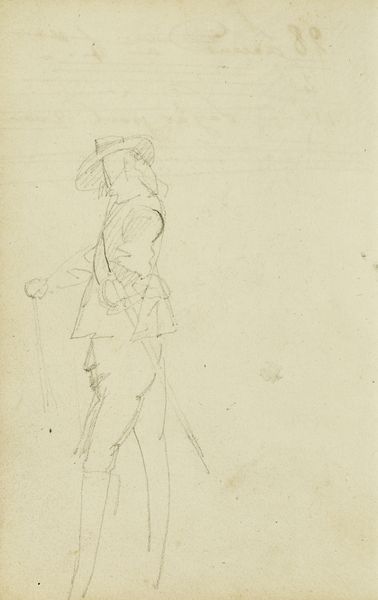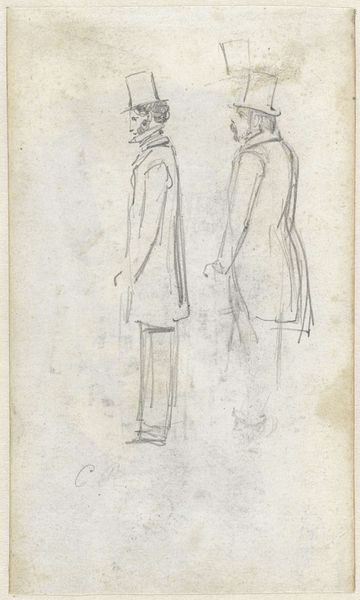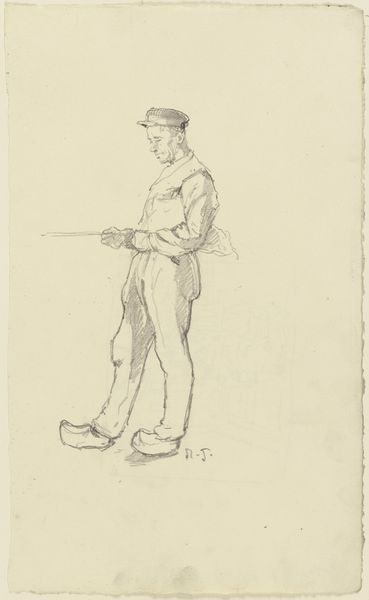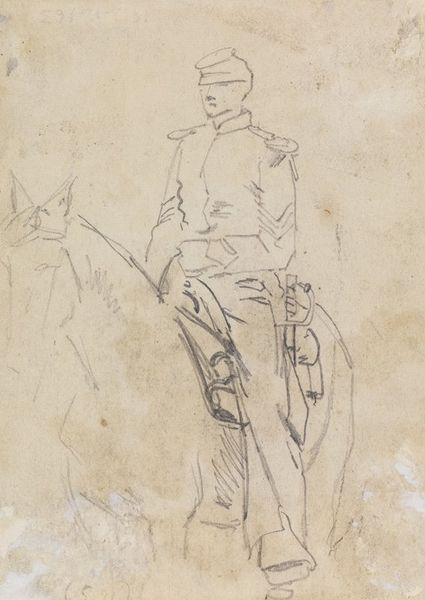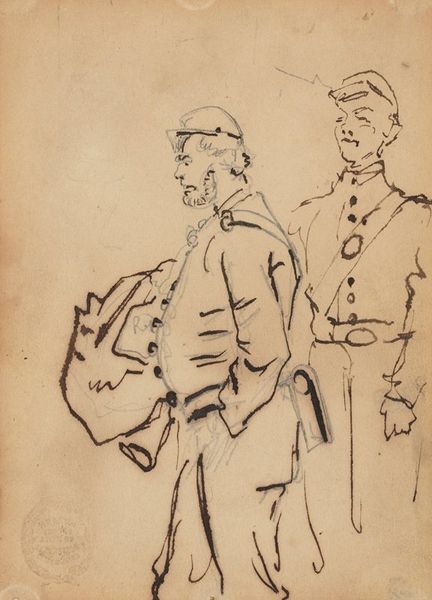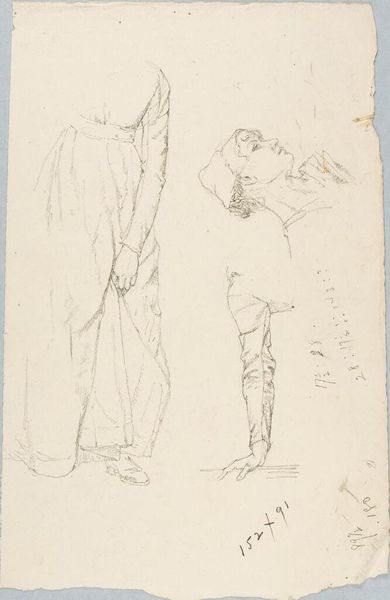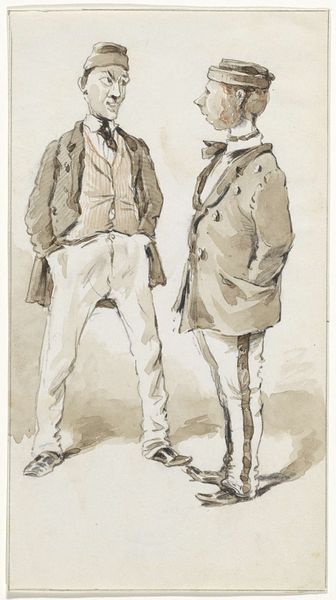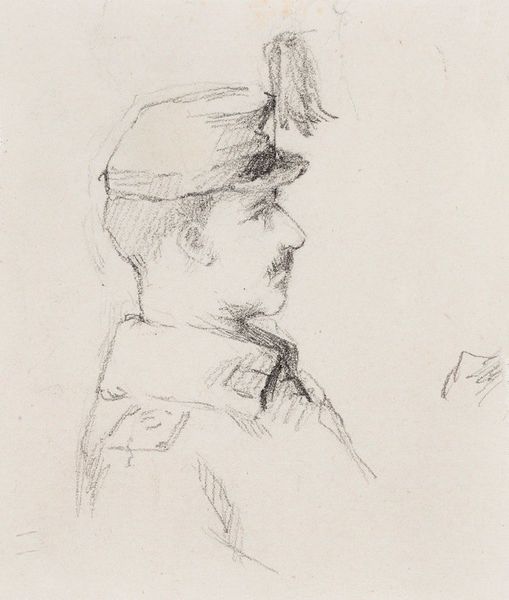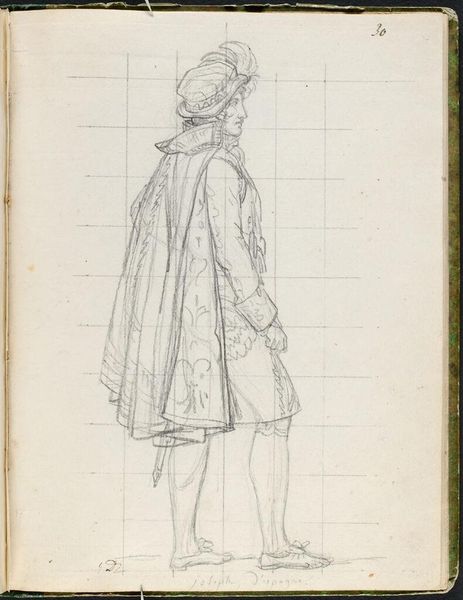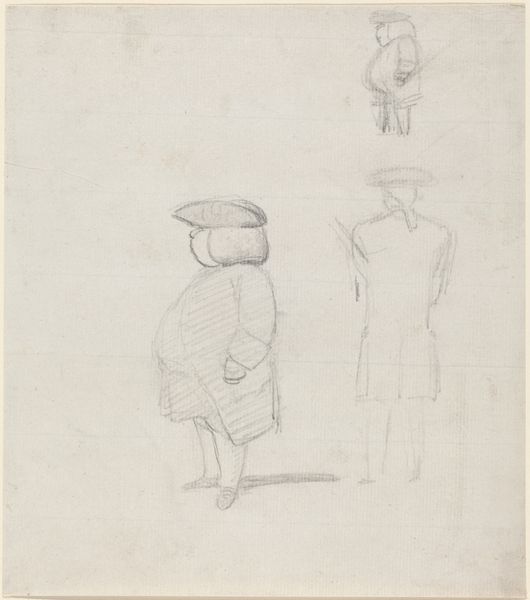
Copyright: Public Domain: Artvee
Curator: Here we have "Male – Two Sketches of a young Man dressed for Shooting" created sometime between 1855 and 1865 by Sir John Everett Millais. It's a pencil drawing, presenting a couple of studies of a young man. Editor: It's sparse but intriguing. The delicacy of the lines creates an almost ephemeral impression; it is as if this character exists in the margins. What draws me in particularly is the very specific fashion that speaks to social positioning in mid-19th-century England. Curator: Absolutely, it's important to view Millais within the context of the Pre-Raphaelite Brotherhood. He aimed to bring back the detailed realism and vibrant colors found in early Renaissance art. Even in this simple sketch, the attention to detail in the clothing hints at a concern for accuracy. You also have to recognize Millais's transition in the later parts of his career into the art establishment as he began to court the Royal Academy, an incredibly powerful institutional force. Editor: Yes, and I wonder what it means to render the male figure this way. Millais uses a relatively conservative, academically-sound form, which contrasts sharply with depictions of women from this period—which were overtly sexualized or rendered as ethereal. We get a more sober vision. It makes me think about issues of masculinity and privilege, how men, especially men of means, are represented within their sartorial environment. Curator: That's a compelling point. These sketches were, of course, probably not meant for public consumption. Millais often used drawings like these to prepare for larger paintings, using pencil to test compositions, details, and arrangements, a habit deeply rooted in the academic training prevalent at the time. There are connections between fine art, education, and wealth. Editor: So these sketches are less about a finalized vision of manhood, but instead preliminary notes or studies towards something greater? It reminds me that these sketches allow us access to a sort of candid vulnerability or unguarded state; the means by which an image takes shape and meaning. It raises significant questions about what we valorize as "high art." Curator: The Pre-Raphaelites, while initially revolutionary, were still participating in art markets driven by very established hierarchies, like many others dependent on them. This work illustrates just that, even with its seeming casualness. Editor: These preliminary glimpses remind us that art-making is a process and the narratives around artwork’s meanings are just as constructed as the drawings themselves. It’s exciting to remember to situate our own understanding, as well, within the power dynamics of how art historical discourse is crafted and upheld.
Comments
No comments
Be the first to comment and join the conversation on the ultimate creative platform.
